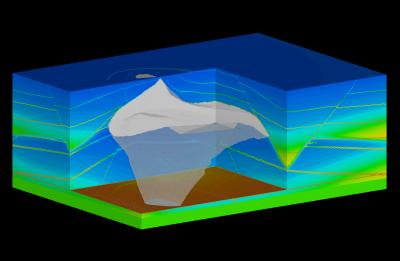EE4595 Wavefield imaging
In many sensing and imaging problems, ranging from geophysical exploration and astronomy to nondestructive testing and medical X-ray tomography, one is interested in information about an object that is not directly accessible and possibly obscured by a surrounding medium. Waves, fields, or a stream of particles may be used as probes to obtain this information. By measuring the fields or particles after they have traveled through an object, the goal is to retrieve the location of this object or its internal constitution or both. This may be realized via sophisticated imaging and inversion algorithms that process the signals as measured by the receivers. These algorithms are often computationally intensive especially for 3D real-world problems. Moreover, inverse problems are usually ill-posed and solutions may be very sensitive to noise or other perturbations of the data. Developing efficient and robust imaging and inversion algorithms is therefore an extremely challenging problem. In this course, we present a general overview of this exciting research field. We follow a multidisciplinary approach and introduce various imaging principles, methods, and applications in a uniform framework. The commonalities that exist between different problems in different fields are emphasized and both linear and nonlinear state-of-the-art solution techniques are discussed.
After a successful completion of this course, you will have an overview of the many different imaging and inversion problems that exist today. You will know the general physical principles behind image formation, and you will know how to retrieve the medium parameters of a penetrable object from measured data. You will also know the difference between an inverse source and inverse scattering problem and how different imaging techniques are related to Born-type linearization of the nonlinear inverse scattering problem. You will also be familiar with different linear and nonlinear solution methods such filtered backpropagation, the linear and nonlinear conjugate gradient (CG) method, Contrast Source Inversion, and Newton's method and its variants.
Teachers
dr.ir. Rob Remis
Electromagnetic and acoustic wavefield modeling, imaging, and inversion
Last modified: 2023-11-03

Details
| Credits: | 5 EC |
|---|---|
| Period: | 0/0/0/4 |
| Contact: | Rob Remis |